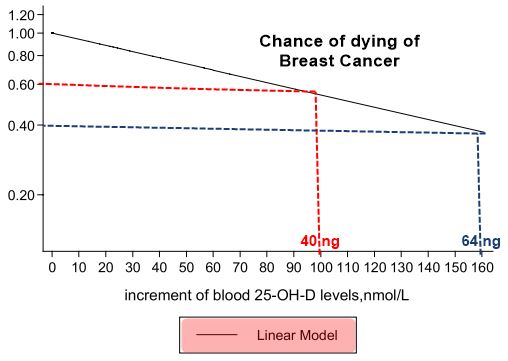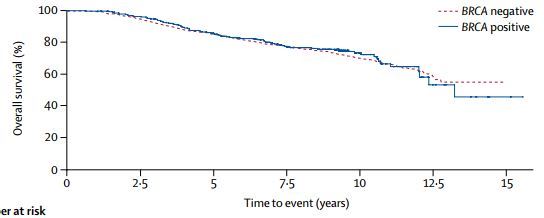Breast Cancer Mortality reduced 60 percent if more than 60 ng of Vitamin D – meta-analysis
Circulating Vitamin D and Overall Survival in Breast Cancer Patients: A Dose-Response Meta-Analysis of Cohort Studies
Integrative Cancer Therapies First Published June 7, 2017 Research Article
Kejia Hu, MD, David Frederick Callen, PhD, Jiayuan Li, PhD, ...

 1. Overview Breast Cancer and Vitamin D contains the following summary and sections{include} 1. Cancers have learned to reduce Vitamin D Receptor activation to reduce Vitamin D from getting to cellsItems in both categories Breast Cancer and 1. F00:Vitamin D Receptor {category}---The risk of 44 diseases at least double with poor Vitamin D Receptor as of Oct 2019 * Omega-3, Magnesium, Zinc, Quercetin, non-daily Vit D, Curcumin, intense exercise, Ginger, Essential oils, etc** Note: The founder of Vitamin D Life uses 10 of the 12 known VDR activators
1. Overview Breast Cancer and Vitamin D contains the following summary and sections{include} 1. Cancers have learned to reduce Vitamin D Receptor activation to reduce Vitamin D from getting to cellsItems in both categories Breast Cancer and 1. F00:Vitamin D Receptor {category}---The risk of 44 diseases at least double with poor Vitamin D Receptor as of Oct 2019 * Omega-3, Magnesium, Zinc, Quercetin, non-daily Vit D, Curcumin, intense exercise, Ginger, Essential oils, etc** Note: The founder of Vitamin D Life uses 10 of the 12 known VDR activators📄 Download the PDF from Vitamin D Life
Studies have shown that vitamin D could have a role in breast cancer survival; however, the evidence of the relationship between patients’ vitamin D levels and their survival has been inconsistent. This meta-analysis explores possible dose-response relationships between vitamin D levels and overall survival by allowing for differences in vitamin D levels among populations of the various studies. Studies relating vitamin D (25-OH-D [25-hydroxyvitamin D]) levels in breast cancer patients with their survival were identified by searching PubMed and Embase. A pooled HR (hazard ratio) comparing the highest with the lowest category of circulating 25-OH-D levels were synthesized using the Mantel-Haenszel method under a fixed-effects model. A two-stage fixed-effects dose-response model including both linear (a log-linear dose-response regression) and nonlinear (a restricted cubic spline regression) models were used to further explore possible dose-response relationships.
Six studies with a total number of 5984 patients were identified. A pooled HR comparing the highest with the lowest category of circulating 25-OH-D levels under a fixed-effects model was 0.67 (95% confidence interval = 0.56-0.79, P < .001). Utilizing a dose-response meta-analysis, the pooled HR for overall survival in breast cancer patients was 0.994 (per 1 nmol/L), P for linear trend < .001. At or above a 23.3 nmol/L threshold, for a 10 nmol/L, 20 nmol/L, or 25 nmol/L increment in circulating 25-OH-D levels, the risk of breast cancer overall mortality decreased by 6%, 12%, and 14%, respectively.
There was no significant nonlinearity in the relationship between overall survival and circulating 25-OH-D levels. Our findings suggest that there is a highly significant linear dose-response relationship between circulating 25-OH-D levels and overall survival in patients with breast cancer. However, better designed prospective cohort studies and clinical trials are needed to further confirm these findings.
